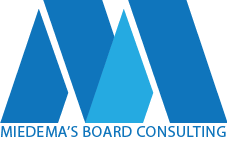The beginning of the year is a great time to think about a board’s annual work plan. All the plans and policies the board worked so hard to put into its Board Policy Manual are no more useful than the paper they are written on if there is no system to monitor that everything is being done as intended.
Board work plans can be organized in a number of ways. One way is to simply list what the Board Chair, CEO, committee chairs and Board Secretary are responsible to bring to the meeting for discussion. An alternative is to organize the board’s work based on the strategic initiatives the board has identified to keep the board focused on the big picture.
The way I like to organize a board work plan is by the types of functions a board performs. This ensures it is performing the correct activities and that the appropriate amount of time is allocated to each. A sample of this type of plan is provided here: Board Annual Work Plan – Sample
The board’s plan is organized under the categories of Strategy, CEO Relations, Monitoring and Board Development allowing enough time for the Legal and Policy work that is required. This ensures that everything mentioned in the Board Policy Manual has a follow-up agenda item to ensure it is being done. Note that I have included an estimate of the time that will be allotted to each task to ensure that the length of the board meetings is managed well. This is also a great way to see how much time the board dedicates to each category and whether it is satisfied with how it spends its time.
For fiduciary and liability reasons, certain items must be on the annual work plan to ensure they happen when the corporation has said they will. The appointment of corporate officers, review of director’s liability insurance and conflict of interest declarations can sometimes be forgotten with the turnover of leadership or the emergence of problems that need to be solved.
Once the plan is in place for the full board, the committee plans will flow naturally out of the board work plan. For example, if new board members are set to be voted on at a particular meeting on the board’s annual schedule then the Governance Committee will want to finalize the development of their motions at their meeting prior to that and time their recruiting activities to be ready. Activities that do not have to be done at a specific time of year can be distributed between the meetings to even out the length of each meeting.
Once the plans are in place the board does not need to spend time every year trying to remember what needs to be done at each meeting or exposing themselves to liability by forgetting critical responsibilities. The old adage “if you fail to plan, you plan to fail” holds with boards as well so take some time at the beginning of this new year to plan for board success in 2016.






